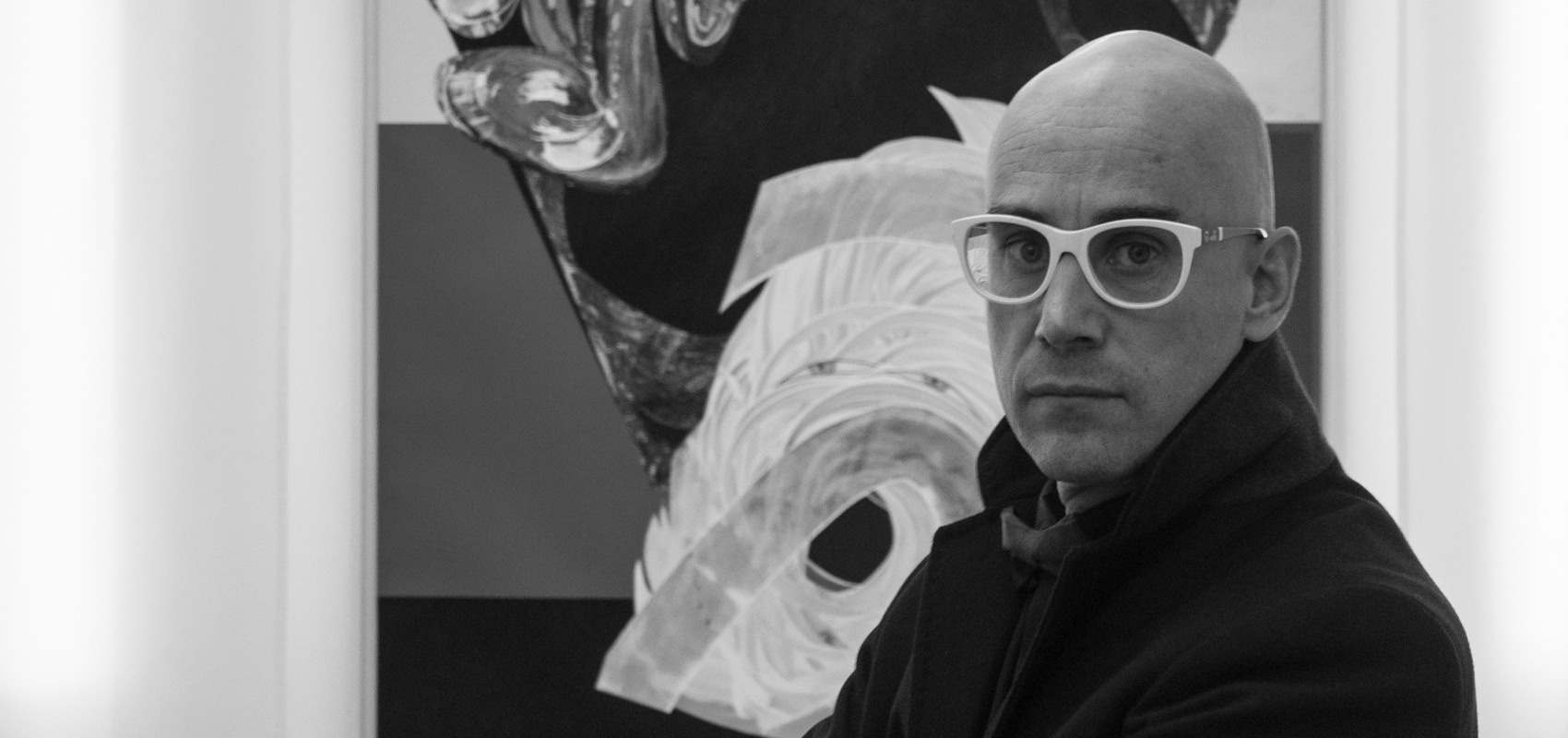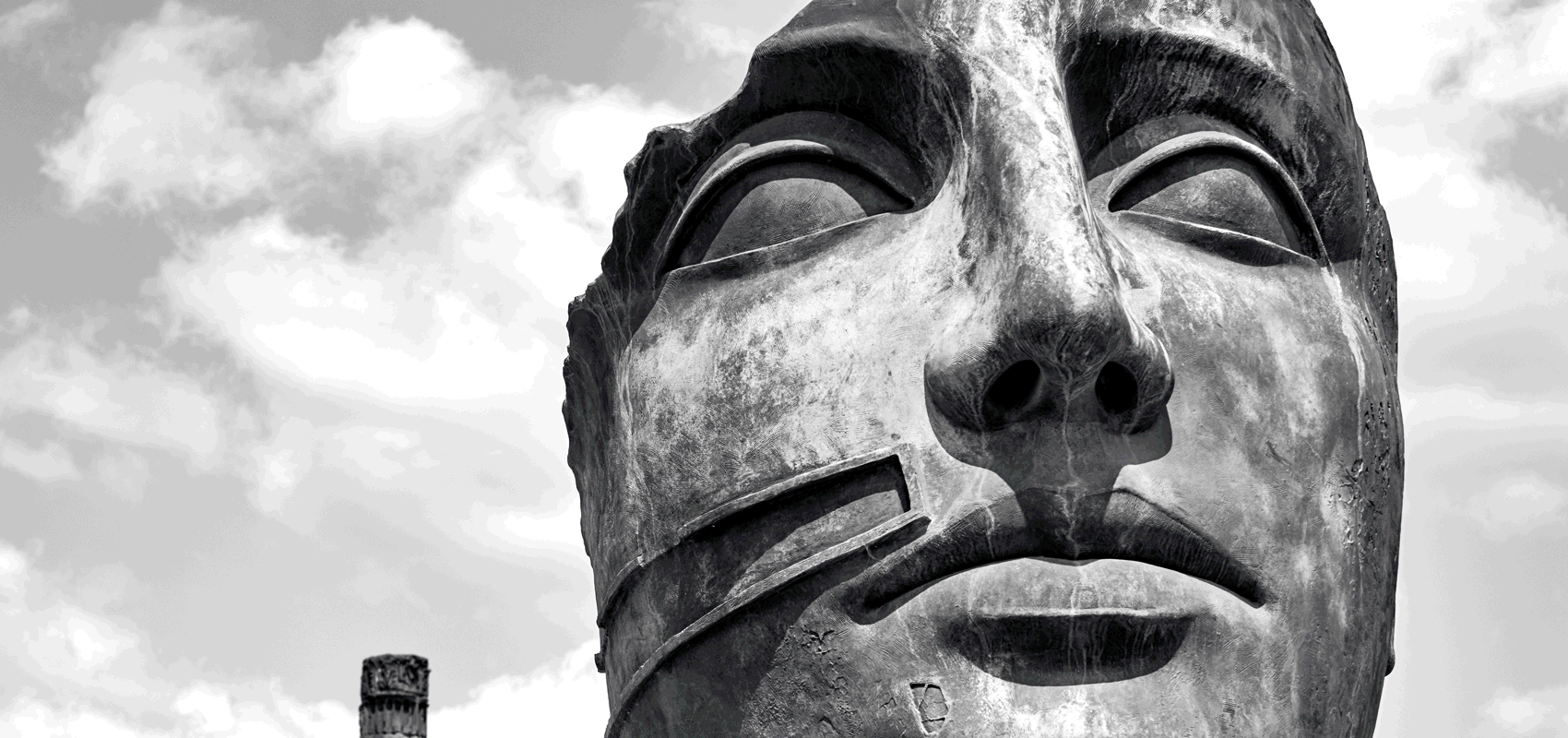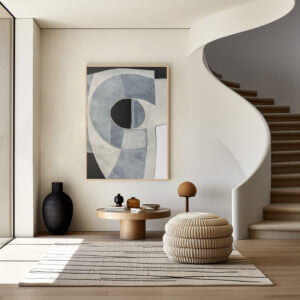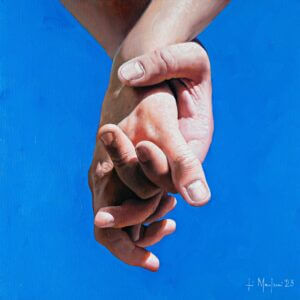A free art, wandering amongst thoughts, moving from elaborated concepts to impalpable sensations. Andrea Marchesini started his journey on a large table covered in paper and is still going “somewhere, nowhere”.
What is the first word that comes to mind thinking of your works?
Honestly, many come to mind, yet the one that condenses them all is “travel”, as a journey within oneself. A journey where the destination is not important, getting there is not important. What matters are the stops. A bit like a caravan in a desert, which benefits from the oases in order to go on forever. All of this functions for the development of a creative thought, which is looking for answers to the questions one has been asking since forever.
This is what painting is to me: the consequence of a thought, a lifestyle, a mirror of the artist himself.
From where does your creative action start?
Mine is a constant “stream of consciousness” like Joyce’s, composed by infinite flashbacks that make images appear to which I try to give sense. My paintings are not traditional paintings, they are creations: there is a lot of colour, a lot of textiles, but also materials like chalk and stucco. The work is done when I find a balance between my inner world and the harmony of shapes, colour and weight of the work. When my works are near the end, yet “something” is still missing, I put them all in a semi-circle in front of the couch in my studio, I sit down and I look at them in silence. I basically familiarize with my own works, until I understand how to complete it in order to find the balance I was mentioning before.
Could you give us an example of how a painting or an artistic project is born?
Let us take for example the series “Frankenstein 2.0”. Those paintings were born from my reflection: humanity, in order to evolve and thus reach the next stage, must de-structure itself – as in a puzzle – and then put together the pieces in a different way. Mary Shelley’s monster was really a positive step towards human evolution, a step higher. This is why to create these pieces I took old works I had left unfinished, I cut out some pieces to which I gave a new shape and I put them back together on a new canvas, to obtain a unicum. The same happens for colours. I use oil, varnishes, and acrylics. Oil and varnish have synthetic bases, while the acrylic is water-based: they are therefore substances that reject each other. And once again I look to harmonize the opposites.
More than painting, I am creating. My disposition is to be against the “single thought” and in favour of individuality and free artistic expression. And one may grasp this also from the environment I work in. my studio is isolated in the middle of wheat fields and vineyards, in absolute tranquillity. Inside, on the contrary, it is a sort of alchemic laboratory, a great chaos where – in order to move – one must open up a way through books, paintings, objects, colours, puppets, masks… this is my shelter, my safety. From being a creative space it transformed into a place, which is a completely different thing. It is my “Somewhere-Nowhere”, which is also the name of the project I am working on at the moment.
What is it about?
“Somewhere-Nowhere” is the title of an exhibition I am preparing for the MA-EC gallery in Milan, which will open to the public in May. For the works I am creating I get my inspiration from my own Neverland, which is “somewhere” yet also “nowhere”.
Would you tell us briefly about your artistic story?
I basically grew up in my mother’s atelier. My education came from life in an art studio rather than from academies. There is an anecdote I love to tell. When my sister and I were around 4 or 5 years old, my mother used to cover up a large table with paper, threw on top of it crayons and felt pens and told us: «Now, have fun! ». So, I spent my days drawing and colouring every centimetre. It is something that influenced my growth, to the point that even today I favour the large. That creative freedom, that infinite space to fill… are still inside me.



